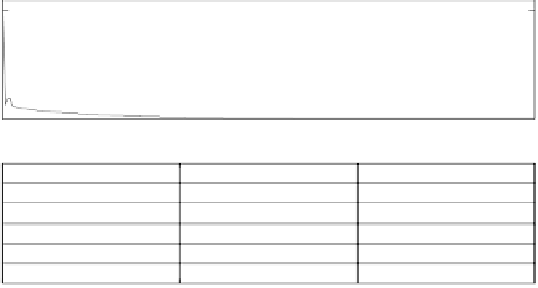Information Technology Reference
In-Depth Information
Trnfmimo1:SSE-Vs-Epoch
300
250
200
150
100
50
50
100
150
200
250
300
No of Epochs
T rnfm im o 1 : N e uro -fuzzy o utp ut-V s-A ctua l
150
100
50
0
-5 0
-1 0 0
-1 5 0
0
500
1000
1500
Tim e
Figure 6.7(a).
Training performance of Takagi-Sugeno-type multi-input multi-output neuro-
fuzzy network with
n
= 4 inputs,
m
= 3 outputs,
M
= 15 fuzzy rules and 15 GMFs for short-
term forecasting of electrical load time series when trained with proposed backpropagation
algorithm. Backpropagation algorithm training parameters: K = 0.0005, J = 0.5,
mo
= 0.5,
maximum epoch = 300, training (pre-scaled) data = 1 to 500 rows of XIO matrix, initial SSE
= 324.6016 (with random starting parameter), final SSE = 23.8580, data scaling factor =
0.01.
sim fm im o .m : N e uro -fuzzy o utp ut vs. A c tua l
150
100
50
0
-5 0
0
500
1000
1500
2000
2500
3000
3500
tim e
sim fm im o .m : N e uro -fuzzy p re d ictio n e rro r
150
100
50
0
-5 0
-1 0 0
-1 5 0
0
500
1000
1500
2000
2500
3000
3500
tim e
Figure 6.7(b).
Forecasting performance of Takagi-Sugeno-type multi-input multi-output
neuro-fuzzy network with
n
= 4 inputs,
m
= 3 outputs,
M
= 15 fuzzy rules and 15 GMFs for
short-term forecasting of electrical load when trained with proposed backpropagation
algorithm. Data 1 to 1500 correspond to training data and data 1501 to 3489 (
i.e.
row 501 to
1163 from XIO matrix) represent the forecasting performance.













































Search WWH ::

Custom Search